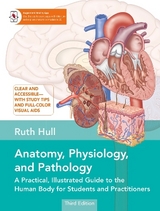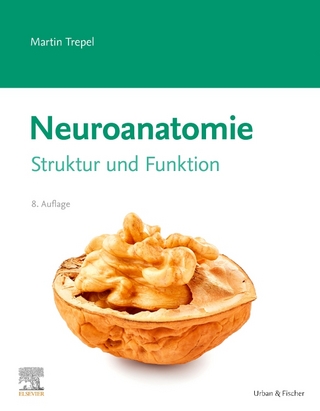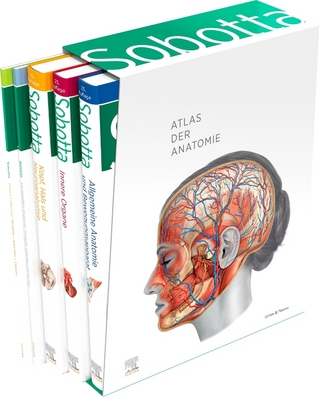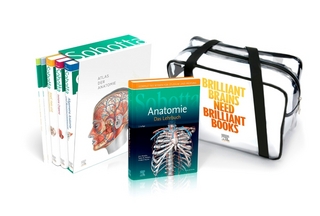
Anatomy, Physiology and Pathology for Therapists and Healthcare Professionals
Lotus Publishing Limited (Verlag)
978-1-913088-05-7 (ISBN)
Written in a clear, no-nonsense style, this is the ideal textbook for students of complementary therapy up to Levels 2 and 3, nursing, physical therapy, or those studying any course requiring a detailed knowledge of anatomy, physiology and pathology
Designed for use both in the classroom and as a home study resource, it provides all the information necessary to meet or exceed the curriculum requirements of all the major international awarding bodies and incorporates many unique features not found in other texts.
This updated and expanded textbook complements Ruth Hull's companion text, Anatomy,
Physiology and Pathology Colouring and Workbook for Therapists and Healthcare Professionals, and:
*meets the standards required by all the main professional bodies for massage, aromatherapy, and reflexology
*contains updated graphics and tables throughout to bring the book right up-to-date for today's student
*interspersed throughout with 'study tips', 'in the classroom', '...in a nutshell', 'did you know?' and 'infoboxes'
*features comprehensive muscle tables of origin, insertion, innervation, action
*contains basic pathology of significant diseases and disorders
*has a study outline, revision and multiple choice questions for each chapter.
Endorsed and reviewed by awarding bodies and professional associations and adopted by colleges worldwide.
Dr Ruth Hull is an integrative health consultant and author who has been working in natural health since 1999 as a therapist, lecturer and writer. Born and educated in Zimbabwe, Ruth holds a degree in philosophy and literature as well as a master's degree in health and homoeopathy. She studied and practiced complementary therapies in London and worked as a homoeopathic doctor and lecturer in South Africa. Ruth now lives in Australia where she divides her time between writing her books, running integrative health workshops and being a mum.
Introduction
Chapter 1: Before You Begin
Anatomical Position
Directional Terms
Anatomical Regions and Body Cavities
Dividing the Body
Planes
Quadrants
Multiple-Choice Questions
Learning Pathology
Important Vocabulary
Stress and Mental Health
Chapter 2: Organisation of the Body
Levels of Structural Organisation of the Body
Chemical Organisation of the Body
Atoms and Elements
Molecules and Compounds
Chemical Bonds
The pH Scale: Acids, Bases and Salts
Nutrients
Major Compounds of the Body
Cellular Organisation of the Body
Plasma Membrane
Transport Across the Plasma Membrane
Cytoplasm and Cell Structures
Cell Division
Tissue Level of Organisation of the Body
Epithelial Tissue
Connective Tissue
Muscle Tissue
Nervous Tissue
Membranes
Mucous Membranes
Serous Membranes
Cutaneous Membranes
Connective Tissue (Synovial) Membranes
System Level of Organisation of the Body
Pathology Basics
Cancer
Study Outline
Revision
Multiple-Choice Questions
Chapter 3: The Skin, Hair and Nails
Skin
Functions of the Skin
Anatomy of the Skin
Types of Skin
Hair
Structure of the Hair
Life Cycle of a Hair
Functions of the Hair
Nails
Anatomy of the Nail
Functions of the Nail
Cutaneous Glands
Sebaceous Glands
Sudoriferous (Sweat) Glands
Common Pathologies of the Skin
Red Flags
Terms for Marks and Growths on the Skin
Common Pathologies of the Nails
Study Outline
Revision
Multiple-Choice Questions
Chapter 4: The Skeletal System
Functions of the Skeletal System
Anatomy of Bones
Bone Tissue
Bone Formation and Remodelling
What Does Ageing Do To Our Bones?
Types of Bones
Structure of a Long Bone
Organisation of the Skeleton
Axial Skeleton
Bones of the Skull
Bones of the Neurocranium
Bones of the Viscerocranium
Bones of the Neck and Spine
Bones of the Thorax
Appendicular Skeleton
Bones of the Pectoral Girdle (Shoulder)
Bones of the Upper Limb
Bones of the Pelvic Girdle (Hip)
Bones of the Lower Limb
Joints
Functional Classification of Joints
Structural Classification of Joints
Movements at Synovial Joints
Common Pathologies of the Skeletal System
Red Flags
Study Outline
Revision
Multiple-Choice Questions
Chapter 5: The Muscular System
Functions of the Muscular System
Muscle Tissue
Types of Muscle Tissue: Skeletal, Cardiac, Smooth (Visceral)
Skeletal Muscle
Structure of a Skeletal Muscle
Muscle Contraction
How Do Muscles Contract?
How Do Muscles Relax?
Types of Muscular Contraction
Muscle Metabolism
Muscle Fibre Types
Muscles of the Body
Skeletal Muscles and Movement
Muscles of the Face and Scalp
Muscles of the Neck
Muscles of the Trunk
Muscles of the Shoulder
Muscles of the Back
Muscles of the Arm and Hand
Muscles of the Hip and Thigh
Muscles of the Leg and Foot
Common Pathologies of the Muscular System
Red Flags
Study Outline
Photographs of Principle Skeletal Muscles
Revision
Multiple-Choice Questions
Chapter 6: The Nervous System
Functions of the Nervous System
Organisation of the Nervous System
Central Nervous System
Peripheral Nervous System
Somatic Nervous System
Autonomic Nervous System
Nervous Tissue
Neuroglia
Neurons
Transmission of a Nerve Impulse
Nerves
Brain
Protection of the Brain
Cranial Meninges
Cerebrospinal Fluid (CSF)
Regions of the Brain
Brain Stem
Cerebellum
Diencephalon
Cerebrum
Cranial Nerves
Spinal Cord
Functions of the Spinal Cord
Anatomy of the Spinal Cord
Internal Anatomy of the Spinal Cord
Spinal Nerves
Special Sense Organs
Eyes
Ears
Mouth
Nose
Common Pathologies of the Nervous System
Red Flags
Study Outline
Revision
Multiple-Choice Questions
Chapter 7: The Endocrine System
Functions of the Endocrine System
Hormones
Types of Hormones
Action of Hormone
Control of Hormone Release
Neuroendocrine System
Endocrine Glands and Their Hormones
Hypothalamus
Pituitary Gland
Pineal Gland
Thyroid Gland
Parathyroid Glands
Thymus Gland
Pancreatic Islets
Adrenal Glands
Ovaries and Testes
Ageing and Our Hormones
The Stress Response in More Detail
The Fight-or-Flight Response
The Resistance Reaction
Effects of Long-Term Stress: Exhaustion
Common Pathologies of the Endocrine System
Red Flags
Study Outline
Revision
Multiple-Choice Questions
Chapter 8: The Respiratory System
Functions of the Respiratory System
Structure of the Respiratory System
Nose
Pharynx (Throat)
Larynx (Voice Box)
Trachea (Windpipe)
Bronchi
Lungs
Physiology of Respiration
Common Pathologies of the Respiratory System
Red Flags
Study Outline
Revision
Multiple-Choice Questions
Chapter 9: The Cardiovascular System
Blood
Functions of Blood
Components of Blood
Blood Plasma
Formed Elements: Erythrocytes, Leucocytes
Heart
Anatomy of the Heart
Pulmonary and Systemic Circulation
Coronary Circulation
Physiology of the Heart
Regulation of the Heart Rate
Cardiac Cycle
Blood Vessels
Arteries and Arterioles
Capillaries
Veins and Venules
Blood Pressure
Primary Blood Vessels of Systemic Circulation
Aorta
Superior Vena Cava, Inferior Vena Cava and Coronary Sinus
Primary Blood Vessels of the Head, Face and Neck
Primary Blood Vessels of the Upper Limbs
Primary Blood Vessels of the Thorax
Primary Blood Vessels of the Abdomen
Primary Blood Vessels of the Pelvis and Lower Limbs
Common Pathologies of the Cardiovascular System
Red Flags
Study Outline
Revision
Multiple-Choice Questions
Chapter 10: The Lymphatic and Immune System
Functions of the Lymphatic and Immune System
Structure of the Lymphatic and Immune System
Lymph
Lymphatic Capillaries
Lymphatic Vessels
Lymph Nodes (Glands)
Lymphatic Organs
Lymphatic Nodules (Muscosa-Associated Lymphoid Tissue)
Resistance to Disease and Immunity
Non-Specific Resistance to Disease
Mechanical and Chemical Barriers
Natural Killer Cells and Phagocytes
Inflammation
Fever
Immunity (The Immune Response)
Types of Immune Responses
Common Pathologies of the Lymphatic and Immune System
Red Flags
Study Outline
Revision
Multiple-Choice Questions
Chapter 11: The Digestive System
Functions of the Digestive System
Overview of the Digestive System
Gastrointestinal Tract and Its Accessory Organs
Mouth (Oral or Buccal Cavity)
Oesophagus
Stomach
Pancreas
Liver
Gall Bladder
Small Intestine
Large Intestine
Common Pathologies of the Digestive System
Red Flags
Study Outline
Revision
Multiple-Choice Questions
Chapter 12: The Urinary System
Functions of the Urinary System
Organisation of the Urinary System
Kidneys
Anatomy of the Kidneys
Physiology of the Kidneys
Urine Production
Fluid and Electrolyte Balance
Ureters
Urinary Bladder
Urethra
Common Pathologies of the Urinary System
Red Flags
Study Outline
Revision
Multiple-Choice Questions
Chapter 13: The Reproductive System
Functions of the Reproductive System
Male Reproductive System
Female Reproductive System
Female Reproductive Cycle
Ageing and the Reproductive System
Common Pathologies of the Reproductive System
Male Reproductive System - Red Flags
Female Reproductive System - Red Flags
Study Outline
Revision
Multiple-Choice Questions
Answers to Multiple-Choice Answers
Appendix: Vitamins and Minerals - Dietary Sources, Functions, Deficiencies
Bibliography
Glossary
Index
| Erscheinungsdatum | 01.02.2021 |
|---|---|
| Zusatzinfo | 450 colour |
| Verlagsort | Chichester |
| Sprache | englisch |
| Maße | 212 x 275 mm |
| Gewicht | 1100 g |
| Themenwelt | Studium ► 1. Studienabschnitt (Vorklinik) ► Anatomie / Neuroanatomie |
| ISBN-10 | 1-913088-05-7 / 1913088057 |
| ISBN-13 | 978-1-913088-05-7 / 9781913088057 |
| Zustand | Neuware |
| Informationen gemäß Produktsicherheitsverordnung (GPSR) | |
| Haben Sie eine Frage zum Produkt? |
aus dem Bereich



